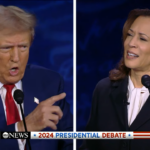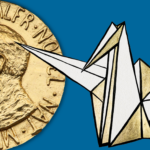Has the deep state hoodwinked Trump?
By Charles P. Blair, Rebecca L. Earnhardt | May 2, 2017
President Donald Trump’s recent military action against the Syrian government is just the latest instance in which the White House has failed to adhere to policies beloved by the far right. Though many of the administration’s more centrist supporters cheered the US missile strike on the Syrian air base, characterizing it as a bold move necessitated by the weakness of Barack Obama, other Trump supporters argued that the president had been tricked into a grand mistake.
The notion of a “tricked” Trump presents a number of questions: Who is deceiving the president? For what purpose? Was Trump’s about-face on Syria merely the result of a humanitarian-infused bid by his family members to blunt the power of the anti-establishment, nationalist, and anti-globalist faction within the White House? Was Trump the victim of a ruse by the “deep state”—a monolithic alignment of federal power centers so intent on maintaining command that it was willing to derail the new administration by encouraging it to pursue unwise military action? Or was the president misled by an even more ominous version of the deep state: one that subverts legitimate civilian leadership in a bid to recouple the United States to “regime change” and similar globalist policies of militant “humanitarian” interventionism? Could the deep state have gone so far as to conduct a false-flag operation, framing the Assad regime for the April 4 chemical weapons attack in Idlib province?
To be clear, one needn’t be a far-right extremist to believe that the deep state in some form exists, or to harbor concerns about it. According to a recent Washington Post-ABC News poll, nearly half of Americans now believe in the existence of a deep state—when “deep state” is defined as “military, intelligence, and government officials who try to secretly manipulate government policy.” Moreover, more than half of Americans who believe in a deep state see it as a “major problem.” But some on the radical fringes of the far right attribute Trump’s turn-about to the machinations of a deep state of unparalleled monstrousness—a deep state synonymous with a “new world order” or “Zionist Occupation Government” (ZOG). These are terms used by some extremists to describe an international cabal, possibly satanic in origin and usually Jewish in leadership, that seeks global domination. Typical sentiments about this perceived cabal can be found in publications such as the Daily Stormer, the most visited radical-right website in the world. In February, the Daily Stormer wrote that “Traitors in the [US] ‘Intelligence Community’ … also known as ZOG” are working with “Jew accomplices. … The only way the people of America can take back control of our government is through Trump taking an iron fist to the criminal network that wishes to retain its rule over some evil globalist mongrel empire.”
While such sentiments have animated far-right thinking for more than 70 years, few realize what a clear and present danger this latest incarnation of conspiracism represents. As some on the far right propagate their belief that the mainstream media is deliberately concealing a massive conspiracy to subvert President Trump’s leadership, they are armed with exponentially growing numbers of seemingly legitimate news stories that appear to support their view. They are also in a sense armed by growing public perceptions about “fake news”—a majority of Americans now thinks that “mainstream news organizations regularly produce false stories.” Then again, Trump himself has often engaged in conpiracism, as when he claimed without evidence that the Obama administration had wiretapped Trump Tower; conspiracism emanating from the Oval Office is a new development in US history. A state of affairs in which unprecedented numbers of Americans have lost faith in traditional arbiters of truth and are unable on their own to distinguish fact from fiction presents a profound threat to social cohesion. But the danger extends even further. If the past is any indication, some extremists on the far right are likely considering violent strategies to counter the threats they perceive. If this supposition is correct, it would be in keeping with long-term trends—much of the time since 9/11, far-right extremists have been responsible for more killings in the United States than have extremists motivated by jihadist ideology. In today’s super-charged political environment, there’s every reason to suspect that far-right conspiracism will continue erupting into violence.
Deep state, deep roots. The term “deep state” is only now receiving widespread attention—but for more than a decade, some have postulated deep-state involvement in a variety of nefarious affairs. The term is often traced to the Turkish phrase derin devlet (or “secret state”). The Turkish term was popularized amid the Susurluk affair of the 1990s, a scandal that revealed close ties between Turkey’s government and its criminal underworld. Academic usage of the term “deep state” often denotes what political scientist Patrick O’Neil describes as “a set of coercive institutions, actors, and relationships beyond those formally charged with defense, intelligence, and policing.” But of likely greater salience to contemporary conceptions of the deep state are the writings of controversial political scientist Peter Dale Scott. In an influential 2007 article, Scott linked “the political assassinations of the 1960s, Watergate, Iran-Contra, and now 9/11 [to] … the deep state, that part of the state which is not publicly accountable, and pursues its goals by means which will not be approved by a public examination.”
Preoccupation with a global cabal akin to today’s “deep state” has animated American thinking for hundreds of years—dark intrigues involving Jesuits, Freemasons, Illuminati, Communists, and so on. The historian Richard Hofstadter, in a seminal 1964 Harper’s Magazine article called “The Paranoid Style in American Politics,” lucidly traced long-standing belief in an “apparatus of education, religion, the press, and mass media [engaging] in a common effort to paralyze the resistance of loyal American” citizens. “Very often,” Hofstadter wrote, “the enemy is held to possess some especially effective source of power: [H]e controls the press; he has unlimited funds; [and] he has a new secret for influencing the mind (brainwashing).” Sound familiar? It certainly sounds familiar to some on today’s far-right fringe, who equate the deep state with global plots hatched by the new world order or the “Zionist Occupation Government”—or both.
Rise of the new world order. Conceptions of a nefarious “new world order” have changed over time; in fact, one of the idea’s earliest incarnations was largely perceived as benign. In his 1940 non-fiction book The New World Order, H.G. Wells called for the creation of just that, “a new world order.” Wells, an ardent socialist, warned that failure to create such a one-world apparatus would risk “an entire and perhaps irreparable social collapse.” By the 1950s, conspiratorialists such as Robert W. Welch, cofounder of the John Birch Society, linked “the new order” to political figures such as then–President Eisenhower, whom he called “a willing agent of the communist conspiracy … part of a broader conspiracy dating back to the 1700s, connected to the Bavarian Illuminati and control by a hidden group of Insiders.”
In 1985, the far-right conspiracy-theory pioneer Eustace Mullins—a disciple of the poet Ezra Pound—published an influential book, The World Order: Our Secret Rulers. The book explored Mullins’s belief that “[i]t has taken centuries of patient effort for the World Order to attain the power it exercises today. Its origins as an international force go back to the Phoenician slave traders.” With purported Jewish stratagems as its leitmotif, The World Order set the stage for growing use of the term “new world order” in the decades to follow. But it wasn’t until President George H.W. Bush’s repeated use of the term, in a January 1991 address to the nation and in speeches thereafter, that significant numbers of the far-right fringe began to perceive the existence of a widespread—and quite possibly existential—plot for planetary control. “We have before us,” Bush said, “the opportunity to forge for ourselves and for future generations a new world order… . When we are successful—and we will be—we have a real chance at this new world order, an order in which a credible United Nations can use its peacekeeping role to fulfill the promise and vision of the [United Nations’] founders.”
Today, virtually all major elements of the diffuse far-right fringe, when characterizing their opponents, refer in some manner to long-standing conceptions of a new world order. For some anti-abortion extremists, the term refers to centralized efforts to exterminate the white race. For some anti-tax radicals, including the resurgent “sovereign citizens movement,” the appellation denotes infiltration and subversion of the US government by an insidious conspiracy that replaces legitimate government with an illegitimate, tyrannical government. Some Christian white supremacists perceive the new world order as satanic in origin. In such cases, Jews may be regarded as the direct offspring of the devil; in league with the Antichrist, they naturally direct the new world order. Some secular white supremacists—as recently explained to the authors of this article by Eugene Gallagher, a noted professor of millennialism and new religions—perceive “a Jewish-led effort to usurp the power and autonomy of a genetically superior white race.” Finally, some elements of the far-right militia movement portray themselves as the last bastion of patriotic resistance to powerful, nefarious national or global governmental forces; they are self-appointed survivalist protectors of the US Constitution―well-armed sentries wary of the new world order. For example, less than seven months ago a paramilitary group calling itself the Crusaders was apprehended while in the final stages of plotting a massive attack on a housing complex in Kansas. Meanwhile, one far-right website is directly linked to more than 100 murders.
Alternative facts: An origin story. In the 1990s, these heretofore fringe beliefs in a new world order began an ascent into the mainstream—due in part to increased normalization of other conspiracy milieus. Television shows such as “The X-Files” and “Conspiracy Theory with Jesse Ventura,” movies such as “Men in Black” and “The Matrix,” and New Age movements emphasizing panacea health remedies and the existence of lost ancient civilizations—all these resulted in “sanitized conspiracism.”
As Michel Barkun, one of the world’s leading experts on conspiracy culture, explained to the authors of this article in an interview, such conspiratorial “motifs [came to be] regarded sympathetically by tens of millions of Americans.” Before the 1990s, such ideas existed far outside the mainstream, and separate from one another; by now, such motifs have merged into a mélange of conspiracy-prone cultures across the entire political and social spectrum. Uniting these cultures is belief in what Barkun terms “stigmatized knowledge”—ideas that, though they are discounted by the institutions (such as universities and associations of scientific researchers) that traditionally have differentiated between knowledge and fallacy, are regarded by some individuals as substantiated. An important category of stigmatized knowledge is “suppressed knowledge”—that is, assertions that authoritative bodies ostensibly know to be credible but nonetheless suppress. They suppress these assertions out of fear that public knowledge would have harmful societal consequences or, more to the point, they do so for purely selfish or evil reasons. As Barkun points out in his seminal study A Culture of Conspiracy: Apocalyptic Visions in Contemporary America, “stigmatization itself is taken to be evidence of truth—for why else would a belief be stigmatized if not to suppress the truth?” For many individuals who accept one conspiracy, traditional authority structures become uniformly suspect, and all stigmatized claims can carry with them an almost axiomatic presumption of validity. This, Barkun writes, “greatly facilitates the flow of such claims through the [conspiratorial] milieu.”
This elevated circulation of cross-pollinated conspiratorialism, now manifest in the increasingly normalized views of the fringe far right, has been facilitated not just by television and movies, as discussed above, but also by Internet platforms. The institutionalization of conspiracy theories in the 1990s coincided with the growing ubiquity of the World Wide Web. Since then, the exponential growth and perceived authoritativeness of the internet have allowed an explosive increase in communication platforms—alternative, and largely without filters—on a scale unimaginable even a decade ago. The result, Barkun writes, is “conspiracism integrated into culture products widely regarded as innocuous forms of entertainment.”
Perhaps nowhere is the merging of increasingly sanitized conspiracies currently more evident than in stipulated links between UFOs and the new world order. In 2014, for example, multiple far-right media outlets seized upon an article in Iran’s semi-official Fars News. The article, claiming access to a secret report by Russia’s Federal Security Services, based on documents leaked by Edward Snowden, highlighted “incontrovertible proof that an alien/extraterrestrial intelligence agenda is driving US domestic and international policy, and has been doing so since at least 1945.”
Similarly, some far-right conspiracy adherents often draw attention to news stories from the Kremlin-backed media operation RT. This popular news outlet frequently conducts interviews with specialists who present arguments for the existence of UFOs and allege that aliens and the US military exchange technologies. RT’s website is host to at least one columnist who specializes in exposing the role that secret societies, such as the Illuminati, allegedly play in directing world affairs. When UFOs, the Illuminati, and new world order conspiratorialism become linked to claims of secret government knowledge—claims based on seemingly legitimate news sources—one sees how suppressed knowledge is formulated, fused, normalized, and widely assimilated into mainstreamed conspiracism. It should come as little surprise, at least when considered in hindsight, that belief in an acutely diabolical deep state has become widespread.
Architecture of belief. It bears emphasizing that only a minority of the far-right fringe equates the deep state with visions of a truly totalitarian global cabal (though the number of individuals with such beliefs may be growing). Also deserving emphasis is the reality that subsequent findings sometimes validate previously discounted conspiracies. That is, some conspiracies are real—for instance, the CIA at one time administered LSD to unsuspecting American citizens. Indeed, one-time CIA counterintelligence chief James Jesus Angleton is credited with saying “Deception is a state of mind and the mind of the state.”
Today’s proliferation of sanitized conspiracies may fuel a shift in the very architecture of belief—what people choose to believe, how they decide to believe it, and how they regard proponents of opposing beliefs. The public’s faith in government, science, and the press has steeply declined. Conventional religious authority structures have in many cases dissolved. As Barkun writes, “Traditional forces that might in other circumstances have interfered with the ability of new belief systems to arise [are proving] unable to do so.” However one regards particular conspiracy theories, there is little risk of self-deception in recognizing that the United States has now ventured well into uncharted conspiratorial waters.
Together, we make the world safer.
The Bulletin elevates expert voices above the noise. But as an independent nonprofit organization, our operations depend on the support of readers like you. Help us continue to deliver quality journalism that holds leaders accountable. Your support of our work at any level is important. In return, we promise our coverage will be understandable, influential, vigilant, solution-oriented, and fair-minded. Together we can make a difference.
Topics: Analysis
















